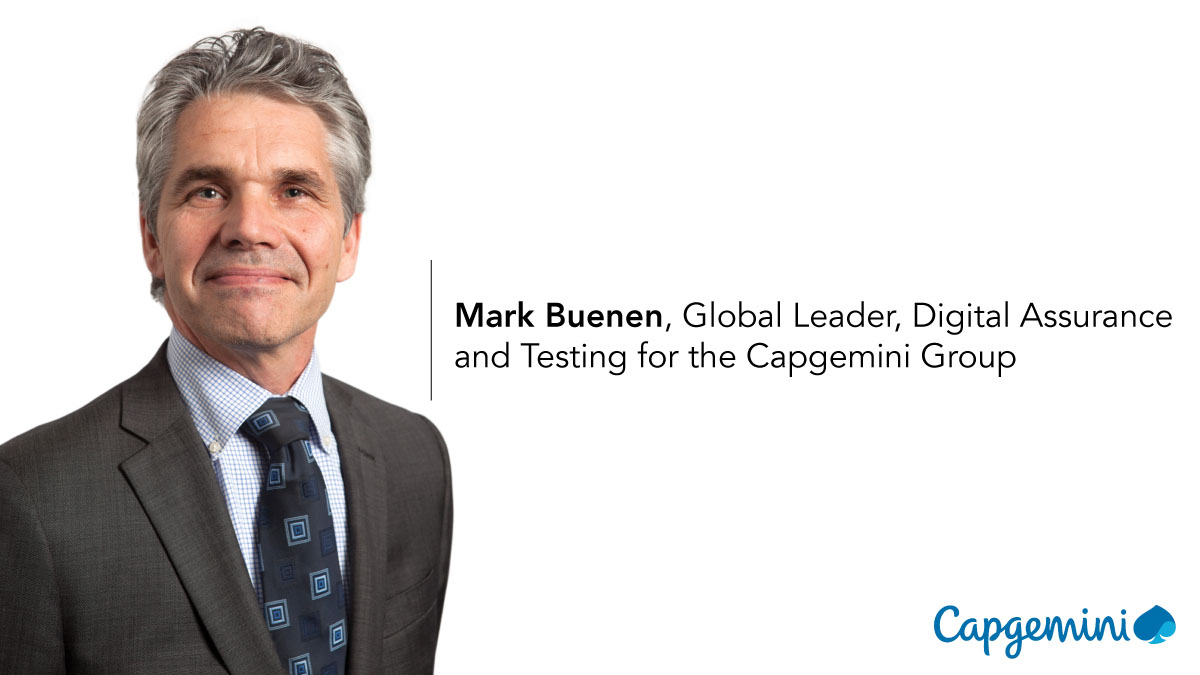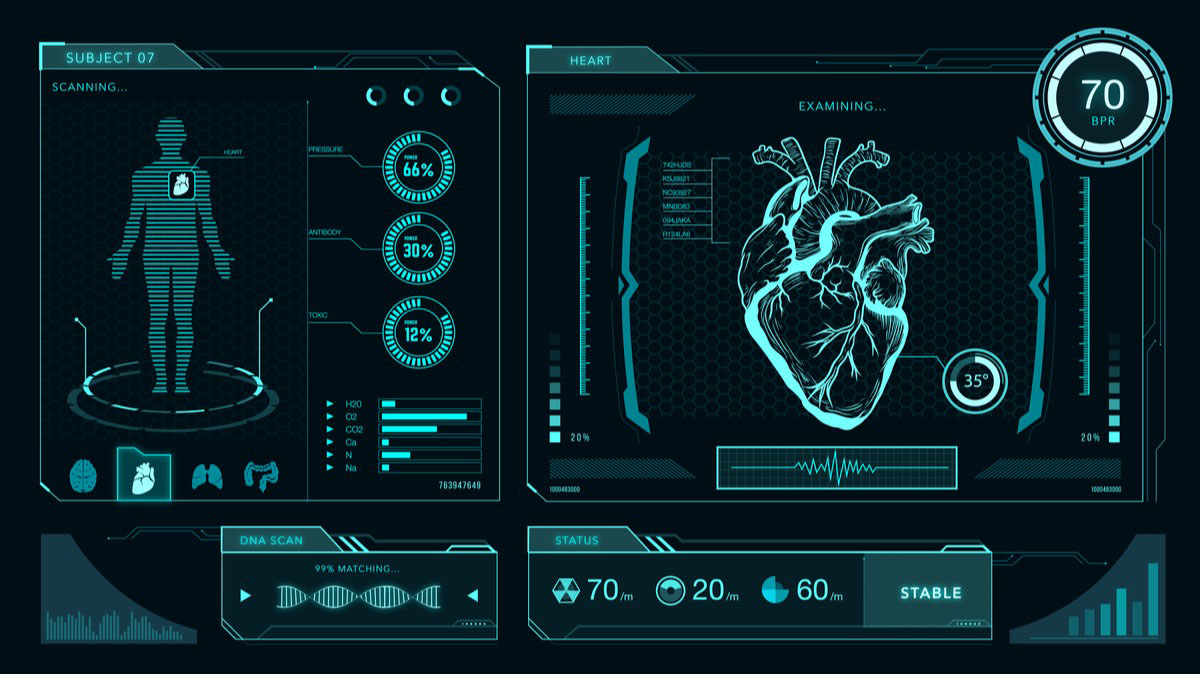Press Releases
Quality assurance is now a business priority to help deliver trusted enterprise digital transformation

The 12th edition of the World Quality Report 2020-21 (WQR), released today by Capgemini, Sogeti, and Micro Focus, shows the steady evolution of quality assurance (QA) from a backroom discipline to an integral part of wider enterprise digital transformation. Contributing to business growth and business outcomes was the highest rated objective for testing and QA at 74% – up 6 percentage points from 2018.
The WQR 2020 highlights that expectations from QA have been increasing with an upward trend across various strategic objectives including the need for QA to support business growth and the importance of ensuring end-user satisfaction. There has been steady and promising progress hindered only slightly by recurring struggles, also noted in previous editions, that include skill gaps and getting a return on investment on test automation.
The adoption of agile and DevOps is steadily increasing, but challenges remain
In line with the trend observed in the last two years, this year too saw an acceleration in the adoption of Agile and DevOps methodologies. While there is a marked focus in increasing the level of test automation and shifting testing to the left using Agile and DevOps, achieving higher levels of in-sprint automation and lack of expertise within the QA team to achieve the desired objectives remain challenging.
Expectations of the benefits that AI and ML can bring to quality assurance remain high
The uptake of artificial intelligence (AI) and machine learning (ML) in QA has also increased. 88% of respondents said that AI was now the strongest growth area of their test activities, and 86% consider AI a key criterion for selecting new QA solutions. Even though the benefits may not yet be fully in reach, the vast majority are enthusiastic about the prospects for AI and ML. The greatest challenge in applying AI and ML in QA was identified as skill gaps, mentioned by 34% of respondents (down two percentage points from last year).
Test automation: Organizations are working to achieve greater control of their QA activities
Previous World Quality Reports have consistently shown challenges in the test automation arena. In achieving quality assurance to a professional’s desired level of test automation, the most common challenge in 2019 was the frequency with which applications were changing. In previous years, the lack of people with sufficient specialist skills and experience within test automation was highlighted. In the 2020 survey organizations expressed a degree of confidence when they were asked for their views on various aspects of test automation: 68% said they have the required automation tools while 63% have enough time to automate tests. However, despite these promising statistics, only 37% felt they get a return on that investment, indicating a gap between confidence and results.
COVID-19 and QA: While there are currently many challenges, organizations are taking advantage of the upheaval to improve their entire approach to QA
As a result of the pandemic, 47% of respondents said there would be significantly greater focus on customer experience validation and on usability testing. Meanwhile, 43% of respondents said that the focus on more and better collaboration tools will go up, and 34% said they will need more remote access to test systems and test environments. There have also been COVID-19-related QA implications around security: 83% of CIOs and IT directors said their application security concerns have increased over the past 12 months, likely a result of the move to a remote working world.
“Despite the challenges brought about by COVID-19 it’s been a promising year for orchestration and quality assurance in the enterprise,” says Mark Buenen, Global Leader of Digital Assurance and Quality Engineering Services at Capgemini Group. “In fact, COVID-19 has acted as an accelerator for QA, demonstrating its integral importance to operations. It’s encouraging to see that QA professionals are optimistic about their testing capabilities. However, as the findings show, this optimism does not always match up to results. By relying more on cloud infrastructure and progressing further with AI for QA, these teams will be able to work faster, smarter and have greater business impact.”
Raffi Margaliot, Micro Focus Senior Vice President and General Manager for Application Delivery Management, said, “QA teams are being spread thinner than ever before, and have responded by accomplishing more with less. This has helped them prepare for the challenges posed by the COVID-19 pandemic, which have accelerated new digital transformation initiatives, and boosted those already in progress. This year’s World Quality Report offers unique insight into how software quality organizations are adapting to the new normal and the escalated urgency for modernization. Progress has been made across the board, and our customers are now looking to expand automation across their organization, and enhance automation through increased adoption of AI.”
For further information and the recommendations based on the research, access the full report here.
World Quality Report 2020 research methodology
The World Quality Report, which this year interviewed 1,750 CIOs and other senior technology professionals, across 10 industries, from 32 countries, is the only global report analyzing application quality and testing trends. It has been produced annually since 2009. Now in its 12th edition, the 2019 report adopted data collection through computer aided telephone interviews. Based on analysis of six respondent groups: CIO, VP Applications, IT Director, QA/Testing Manager, CDO/CMO, and CTO/Product Head, the report surveyed respondents from across the globe through quantitative interviews followed by qualitative deep-dive discussions.
About Capgemini
Capgemini is a global leader in consulting, digital transformation, technology, and engineering services. The Group is at the forefront of innovation to address the entire breadth of clients’ opportunities in the evolving world of cloud, digital and platforms. Building on its strong 50-year heritage and deep industry-specific expertise, Capgemini enables organizations to realize their business ambitions through an array of services from strategy to operations. A responsible and multicultural company of 265,000 people in nearly 50 countries, Capgemini’s purpose is to unleash human energy through technology for an inclusive and sustainable future. With Altran, the Group reported 2019 combined global revenues of €17 billion.
About Sogeti
Part of the Capgemini Group, Sogeti operates in more than 100 locations globally. Working closely with clients and partners to take full advantage of the opportunities of technology, Sogeti combines agility and speed of implementation to tailor innovative future-focused solutions in Digital Assurance and Testing, Cloud and Cybersecurity, all fueled by AI and automation. With its hands-on ‘value in the making’ approach and passion for technology, Sogeti helps organizations implement their digital journeys at speed.
About Micro Focus
Micro Focus delivers enterprise software to empower our 40,000 customers worldwide to digitally transform. With a broad portfolio, underpinned by a robust analytics ecosystem, the company enables customers to address the four core pillars of digital transformation: Enterprise DevOps, Hybrid IT Management, Predictive Analytics and Security, Risk & Governance. By design, these tools bridge the gap between existing and emerging technologies so customers can run and transform at the same time.
Press Releases
Monty Mobile: The First Company in the Middle East & Africa to Provide 5G End-to-End Solutions for Telcos

Monty Mobile provides an in-house, cost-effective, well-optimized 4G+ and 5G end-to-end wireless solution serving both small and large-scale mobile and fixed operators targeting both urban and rural areas.
Moreover, operators are offered flexible payment plans for up to 5 years, first payment after 3 years, helping them stay ahead of their competitors.
This on- cloud solution guarantees improved scalability, mobility and security in addition to great savings on both CapEx and OpEx.
With this solution, Monty Mobile is introducing an alternative to Tier1 Telecom Suppliers such as Ericsson, Huawei, Nokia, and ZTE.
“The best is yet to come; stay connected!”, says Mountasser Hachem, Founder & Chairman of Monty Mobile.
More details regarding this full end-to-end solution will be disclosed in the Inside Telecom magazine next month in an exclusive interview.
Press Releases
Africa’s Leading Independent Telecommunications Services Provider, Phase3 Telecom moves onto Digital Connectivity Enterprise in Nigeria and West African Sub-region

The upgrades will cover security features, performance enhancements. agile update capacity and quality delivery mechanisms.
ABUJA, Nigeria, March 10, 2022: Africa’s leading independent aerial fiber optic network infrastructure and telecommunications services provider, Phase3 Telecom, is enabling advanced digital connectivity, improved performance and enhanced network security for enterprise. This drive is targeted at cost efficient and unified network endpoint management for businesses in Nigeria and the West African sub-region.
This development is also designed to amplify Phase3 enterprise value active network deployments for MSMEs, large scale corporates and institutions.
According to the company’s executive chairman – Stanley Jegede, “this expansive service optimization is targeted at improved coverage on Phase3 network routes through Africa as well as to assure solutions that help businesses transform and scale seamlessly.
He says, “Phase3 current network upgrades is an ongoing exercise and will cover security features, performance enhancements, agile update capacity, and quality delivery mechanisms for enterprise segments. Especially in the areas of productive work-from-anywhere or do-business-from-anywhere and digitized remote connectivity solutions”.
In addition to the company’s focus to increase enterprise based networks data handling capacity and their capability to access data within dissimilar sources faster vis-a-vis smarter, as today’s global clime demands.
Jegede, in his concluding statement says, “Phase3 layered digital capabilities will both enhance Phase3 network architecture and compliment legacy connectivity service experience in remote locations with significant Phase3 presence and network access points.
About Phase3 telecom
Phase3 Telecom is a leading independent fiber optic infrastructure with Points-of-Presence (POPs), colocation, and NOCs in Nigeria. Issued a National Long Distance Operator (NLDO) license in 2003 by the Nigerian Communications Commission (NCC), and with a vibrant as well as a dedicated team of experienced professionals, we are the network of choice for high-performance, data-intensive and low latency connectivity that span dedicated internet access, MPLS VPN, metro ethernet, wide area network solutions etc. We currently operate across the ECOWAS region and international markets through strategic partnerships that allow us to connect our clients across 400 cities worldwide. And ours is an extensive and secure network with end-to-end capabilities that service providers and businesses can rely on to scale, manage costs and assure efficiency. As our network continues to evolve into other layered service streams, including cloud-based and network security solutions – our invaluable clients will continue to remain the core of every investment that we make; innovation that we create; and technology that we adopt during the 4th industrial revolution to position us as the network of the future.
Press Releases
Digital Therapeutics Revenue from Health Insurers to Reach $8 Billion Globally by 2026

Hampshire, UK – 14th March 2022: A new study from Juniper Research has found that digital therapeutics revenue from health insurers will increase to $8 billion by 2026, up from $1.1 billion in 2022; representing a growth of 610 percent over the next four years. Digital therapeutics are clinically validated software programs for the treatment of chronic medical conditions, either independently or in conjunction with other therapies.
The report found that digital therapeutics facilitate the proactive mitigation of chronic medical conditions before they require costly interventions; enabling health insurers to reduce long-term costs per patient. However, it highlighted that these savings will be limited to health insurers in developed regions, where consumer devices and digitalized health infrastructure are ubiquitous. As such, it noted that health insurers in Africa and Latin America will contribute less than 2 percent towards health insurer-led digital therapeutics revenue in 2026.
A new research, Digital Therapeutics & Wellness: Key Trends, Business Models & Market Forecasts 2022-2026, identified that insurers will also benefit from an ongoing shift among digital therapeutics vendors towards engagement- and results-based payments. It recommends that therapeutics providers looking to leverage this trend prioritize the development of performance benchmarks, as demonstrating improvement and preventing patient abandonment will become a direct monetary issue.
Machine Learning to Move into Advisory Role as Liability Issues Emerge
The report forecasts that the number of people using digital therapeutics will increase by 381% over the next four years, and recognizes that machine learning will be key to this growth by facilitating advanced data analytics, remote patient monitoring, and real-time conversational coaching. However, it cautioned that an ongoing lack of standards surrounding the use of machine learning within digital therapeutics will result in vendors limiting its role in their offerings.
Research author Adam Wears explained: “As developers and healthcare providers increasingly grapple with issues of liability and malpractice, machine learning will transition from a patient-facing role to a diagnostic tool offered through provider-facing dashboards; to be used by clinicians and specialists in a manner akin to traditional computer-aided diagnostics.”











